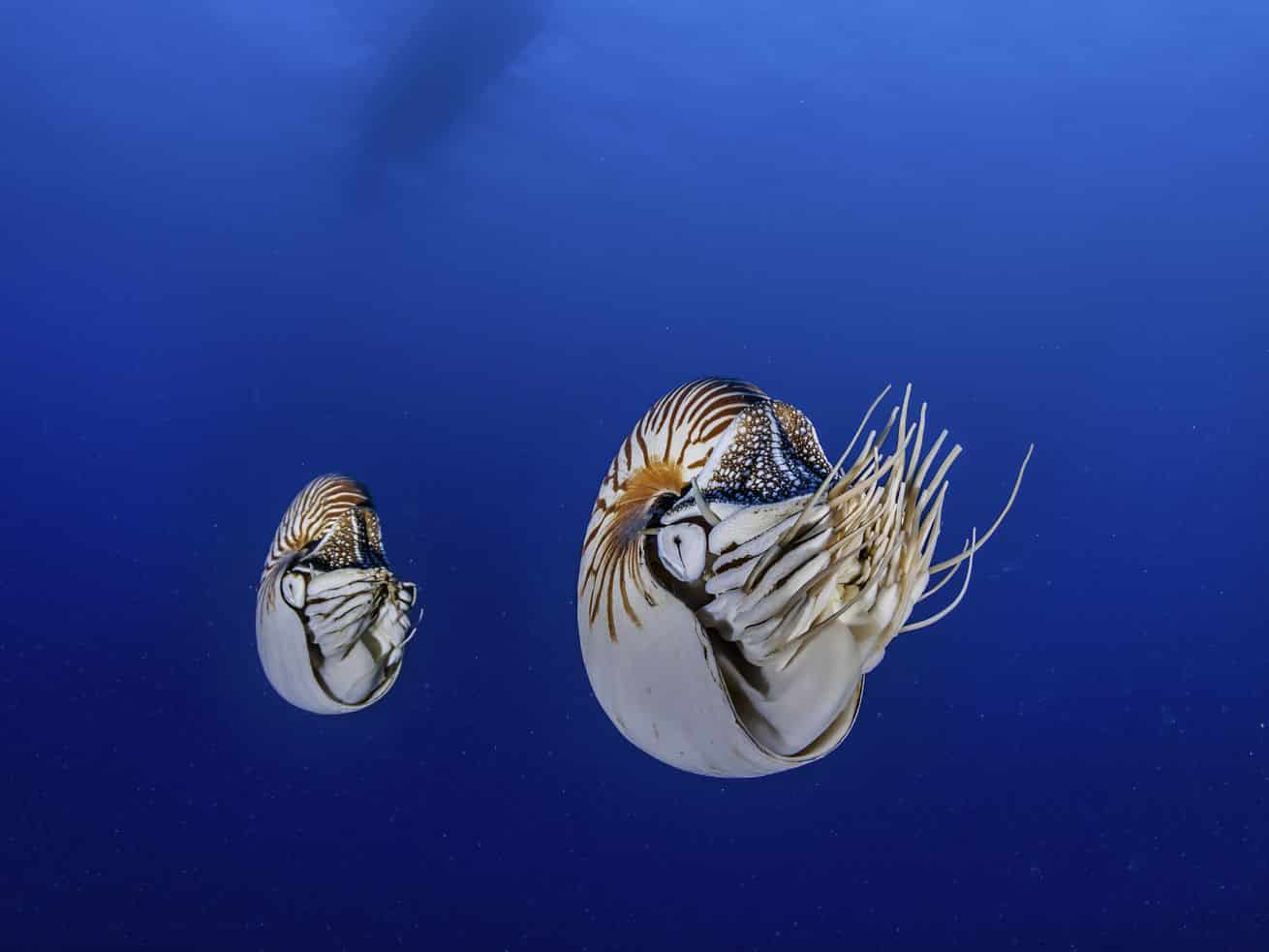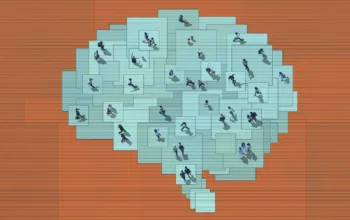In The Sound of the Sea, environmental journalist Cynthia Barnett explores the history and science of shells.
This story is part of Down to Earth, a Vox reporting initiative on the science, politics, and economics of the biodiversity crisis.
Many years ago, the Bailey-Matthews National Shell Museum in Florida surveyed its visitors to find out how much they knew about seashells. Ninety percent of them, as the survey revealed, didn’t know that shells were made by live animals.
“I was just absolutely floored when I heard the statistic,” said Cynthia Barnett, an author and environmental reporter who teaches journalism at the University of Florida. “Most people thought they were some sort of rock or stone, and I was really disturbed by that. It just got me thinking how separated we are from the natural world.”
Barnett didn’t let that thought go. It became an obsession — and eventually, a book. Published earlier this month, her new book, The Sound of the Sea: Seashells and the Fate of the Oceans, is a story about seashells and the creatures that make them.
Seashells aren’t just interesting because of the fascinating and bizarre animals that create them, Barnett writes. They’ve also shaped human societies and laid the groundwork for one of the world’s most recognizable oil companies, Royal Dutch Shell. And whether you know it or not, seashells are all around us — in construction materials, in the ground below our feet, even in our toothpaste.
/cdn.vox-cdn.com/uploads/chorus_asset/file/22702234/4_03_Sound_of_the_Sea_FINAL.jpg) Courtesy of W. W. Norton
Courtesy of W. W. NortonShells also reveal a frightening future that climate change is swiftly ushering in. “The sea and its life are taking a far greater blow than those of us on land,” she writes. Oceans are absorbing far more heat than land and they’re becoming more acidic, as they suck up much of the carbon dioxide we emit into the air. That’s taking a toll on many mollusks, she writes, as is over-harvesting.
I recently spoke with Barnett about these threats, and her own place in the sweeping story of seashells. She used to spend summers harvesting wild scallops in Florida, and ate seafood on the road while reporting the book, she said.
But as she’s learned about the true price of harvesting, she’s changed her habits, and she’s optimistic that others are doing the same. “I think our ethics of gathering seafood, of cooking seafood, has changed, and that could give us a lot of hope,” she told me. “We do change over time.”
Our conversation has been edited for length and clarity.
The animals inside seashells
Benji Jones
Where do seashells actually come from?
Cynthia Barnett
Seashells are made by the wondrous creatures that live inside of them — the marine mollusks. There are about 50,000 of them known. Mollusks are the second-largest group of animals behind the arthropods — which include the insects — and they are scooting and flipping and scooching all over the world from the deepest parts of the ocean to the highest mountain peaks.
Benji Jones
When I think about seashells, I think of oysters in a restaurant or perhaps the beautiful conch shell. How varied are seashells?
Cynthia Barnett
There are the gastropods, which are animals that make a single coiled shell. Then there are the bivalves, which are those double-shelled animals like clams and scallops. And then, of course, there are the cephalopods like the unshelled octopus or the squid, which had a shell long ago but evolved out of it. They traded in their shells for speed.
Marine mollusks evolved shells to protect themselves. As fishes and crabs evolved stronger teeth and stronger claws for pinching, seashells became stronger and stronger and more varied and more elaborate over tens of millions and even hundreds of millions of years. It’s an evolutionary arms race.
The really cool thing is that so many other things we love about seashells also evolved as protection. Sometimes when you pick them up, they’ll slam shut their little trap doors. The terebrids, or auger shells, have these really narrow apertures — the part of the shell you hold up to your ear — so predators can’t pry into them. The cowries evolved these really smooth, glossy humps, which scientists think makes it hard for a crab to hold on to them.
/cdn.vox-cdn.com/uploads/chorus_asset/file/22703428/GettyImages_157900296.jpg) BSIP/Universal Images Group via Getty Images
BSIP/Universal Images Group via Getty ImagesBenji Jones
How do they make these shells in the first place?
Cynthia Barnett
That is the process of biomineralization. The primary element in seashells is calcium carbonate. And the animals take that from the sea around them and build their shells slowly as they grow. So they’re basically secreting the shell at the edges, and they do that over most of their lives. Although kind of like humans, they grow faster at different times of their lives.
“We walk on a world of shells”
Benji Jones
Until reading this book, I didn’t realize that seashells are essentially all around us — in our building materials and in the design of buildings.
Cynthia Barnett
When I set out to write this book, I started thinking about all the places that seashells are found. They’re underfoot, making up limestone aquifers where we’re getting our drinking water. We walk on the bodies of all the marine life that has ever lived. A lot of the built environment is also made of seashells including the Empire State Building and the Washington Cathedral — these are great buildings cut from limestone.
Benji Jones
Limestone is the result of ancient shells basically being compressed over millennia.
Cynthia Barnett
Yes, that’s exactly right, and it’s a really hardy building material. Beyond that, of course, seashells are models for a lot of classic architectural design. Gaudi’s vaulted rooftops in Catalonia, Frank Lloyd Wright’s Guggenheim Museum in New York, Jørn Utzon’s Sydney Opera House in Australia. Utzon credited the fierce-looking cockscomb oyster for that waterfront beauty.
/cdn.vox-cdn.com/uploads/chorus_asset/file/22703431/GettyImages_81975245.jpg) Gaye Gerard/Getty Images
Gaye Gerard/Getty ImagesBenji Jones
I just love this idea that the shells are the homes for mollusks, but also, in some cases, they house us. Is it also true that shells are in toothpaste, or am I making that up?
Cynthia Barnett
You are not making that up. Shells are in toothpaste for the calcium carbonate. The same thing that helps make them tough is a good material for keeping our teeth clean. The ancient Greeks ground oysters and used it on their teeth to keep their teeth white and clean.
The world’s first currency
Benji Jones
As you write, a small seashell called the cowrie was used as a form of currency for a long time. When and where was that?
Cynthia Barnett
These little shells were harvested en masse in the Maldives for a thousand years, and they were used as money around the world. The money cowrie is a reef-dwelling algae-eater in the genus Cypraea, which actually shares its Greek root word with cryptocurrency — crypto, meaning hidden or secret. I was really fascinated by the money cowrie when I found out that it had been used as a major currency of the slave trade. In West Africa, they actually purchased an estimated third of the enslaved Africans forced to the Americas.
/cdn.vox-cdn.com/uploads/chorus_asset/file/22703434/GettyImages_492778715.jpg) DeAgostini/Getty Images
DeAgostini/Getty ImagesBenji Jones
And why the cowrie? Is there something particular that makes the shell so special?
Cynthia Barnett
For one, they’re very uniform in size, so they were easy to count. They also packed up really well into ship ballast. And they were something you could put into a pocket or a purse and easily use like coins. They are really small and could fit on the tip of your pointer finger.
Benji Jones
Do we have a sense of when they became money? Was there a formal process that made that happen?
Cynthia Barnett
It was informal at first. There’s a wonderful global historian named Bin Yang who has written an entire history of the money cowrie as currency, and he found that Maldivian cowries were spending like coins in India as early as the fourth century. Then they moved west to the Persian Gulf and the Red Sea, they spread to mainland Southeast Asia, and then they took off.
The oil company Shell has its origins in actual shells
Benji Jones
You tell another story about the value of shells — more specifically, the ones that laid the groundwork for Royal Dutch Shell, the oil company.
Cynthia Barnett
Shell’s history dates to a Jewish curio shop owner in the East End of London. His name was Marcus Samuel, and in the 1830s, he was importing tropical seashells. The big thing that made him wealthy were these little gift boxes bejeweled with seashells. He thought of the idea of selling them as tourist items at beaches all around the United Kingdom. They were really, really popular.
One of his sons, Marcus Samuel Jr., is the one who ended up founding Shell Oil. At that time, oil was transported in cases and it sort of sloshed around. It could catch fire. It could burn ships. What Marcus Samuel Jr. did was help design the first safe oil tanker to be able to take a large amount of oil through the Suez Canal.
/cdn.vox-cdn.com/uploads/chorus_asset/file/22703438/GettyImages_1320382234.jpg) Nathan Stirk/Getty Images
Nathan Stirk/Getty ImagesBenji Jones
Is the company’s logo a scallop?
Cynthia Barnett
Yeah. The first logo they had was like a homely little mussel — just really boring. The scallop is perhaps the most brilliant-ever marketing symbol. It’s been a beloved shape for most of humanity. That bright yellow scallop shell has become so iconic for Shell Oil that the company doesn’t need to use its name when it uses that logo.
What’s poignant about this, and another reason for doing this book, is the revelation that seashells are beginning to be impacted by acidifying and warming seas. A company that started out with a founder who loved seashells so much is now trading in a fossil fuel, whose emissions are harming the oceans and creating acidifying seas that are, in turn, harming seashells and the animals that make them.
Fossil fuels are harming shell-building mollusks
Benji Jones
The increase in CO2 emissions is not only warming the oceans but increasing the level of acidity inside of them. How does that work?
Cynthia Barnett
The carbon dioxide in the atmosphere and in the oceans is a limiting factor for the mollusks in taking in calcium carbonate to build their shells. The carbon dioxide we’ve sent into the atmosphere by burning fossil fuels has turned seawater about 30 percent more acidic than it was at the start of the industrial era. That chemical change in the ocean has begun to limit the carbonate that mollusks use to make their shells. Acidic waters can also bore into some shells, pitting them or eroding them.
Mollusks are also threatened by warming. Some parts of the ocean have already become too warm for the shell-making animals. But the other beautiful thing about marine mollusks is that these are incredible survivors, and they did make it through five mass extinctions.
“Shell madness”
Benji Jones
Shells, we now know, can represent wealth. But for many people, they are collector’s items. As you write in the book, there were these periods when shell collecting was a wildly popular hobby — there was “shell madness.” What does that look like?
Cynthia Barnett
There are two really fascinating periods of crazed shell collection. One begins in the 16th and 17th centuries in the Netherlands, when these exploratory ships began to take off for the Indo-Pacific and bring back these amazing, beautiful seashells — all kinds of chambered Nautiluses, Conchs, and things that you just don’t see on the beaches of the North Sea.
These seashells became extremely valuable to the Dutch. Rembrandt himself got caught up in the shell madness. You had dilettantes in Holland paying more for a single seashell than they would pay for a famous Dutch master painting. That lasted for a couple of hundred years, and it sort of collapsed in the wake of the French Revolution.
/cdn.vox-cdn.com/uploads/chorus_asset/file/22703446/GettyImages_549356781.jpg) Braunger/ullstein bild via Getty Images
Braunger/ullstein bild via Getty ImagesAnother shell madness happens in the United States, post-World War II. Part of that was spurred by the number of American soldiers who served in the Pacific, in places like Palau, Guam, and Hawaii that have incredible seashells. They brought home tropical shells as souvenirs or keepsakes, and that helped spark a great excitement for seashells that lasted for a couple of decades in the United States.
Florida was a hotspot for that madness. People would make a pilgrimage to Sanibel Island and collect as many shells as they could. It was really a mecca because, at that time, people collected live shells and they would just fill their car trunks with seashells to bring home.
Benji Jones
I’m sure that smelled good.
Cynthia Barnett
There was a joke here in Florida that the best seashells to be found were just south of the Georgia line because that’s when the station wagons would begin to stink and they would have to stop and unload all the shells on the side of the road.
If you stayed in a beachfront motel on Sanibel Island there would be a boiling station where everybody brought the live animals to just boil them and retrieve the shells. It was a big part of shell collecting culture. That has really changed. People who would have thought nothing of taking a whole trunk full of life, say, in the 1950s or 60s, would never do that today. It’s one of those stories that gives you some hope that people can change.
Benji Jones
I’m curious, and this is more of a philosophical question, but why did — or still do — seashells have such a grip on us?
Cynthia Barnett
I think we are fundamentally drawn to beauty. This is something that really makes us human and binds us. There’s something really mesmerizing about looking at the top of, say, a lightning whelk or certain kinds of conchs, that just have this wonderful, mesmerizing spiral. It’s something that was true 100,000 years ago, and it’s true today.
/cdn.vox-cdn.com/uploads/chorus_asset/file/22703459/GettyImages_589095428.jpg) Getty Images/iStockphoto
Getty Images/iStockphotoBenji Jones
Are you a collector?
Cynthia Barnett
I am not a collector, and I know that because I followed real shell collectors around for about six years while I was working on this book. The hardcore shell collectors are known as conchologists. They’re really knowledgeable about shells and the animals that make them. Another way I know I’m not a collector is that I have a favorite shell. When I would interview conchologists, I soon found out that none of them have a favorite shell. That’s like asking them, “Who’s your favorite kid?” They just won’t answer the question.
Benji Jones
I’ve got to know, what’s your favorite shell?
Cynthia Barnett
My favorite shell is the lightning whelk. It’s this gorgeous spiraled gastropod that was also really loved by the indigenous Floridians called the Calusa. They actually built these great cities of shell in southwest Florida — all of these incredible shell structures and mounds that were later flattened for road fill and to spread on agricultural fields.
The lightning whelk has an unusual feature. It opens to the left, and usually, shells open to the right. If you hold a typical shell in front of you, the aperture — or the part that you hold to your ear — will be on your right, if the shell is pointing up. But in a lightning whelk, it’s on the left. It’s just a beautiful shell.
Author: Benji Jones
Read More



